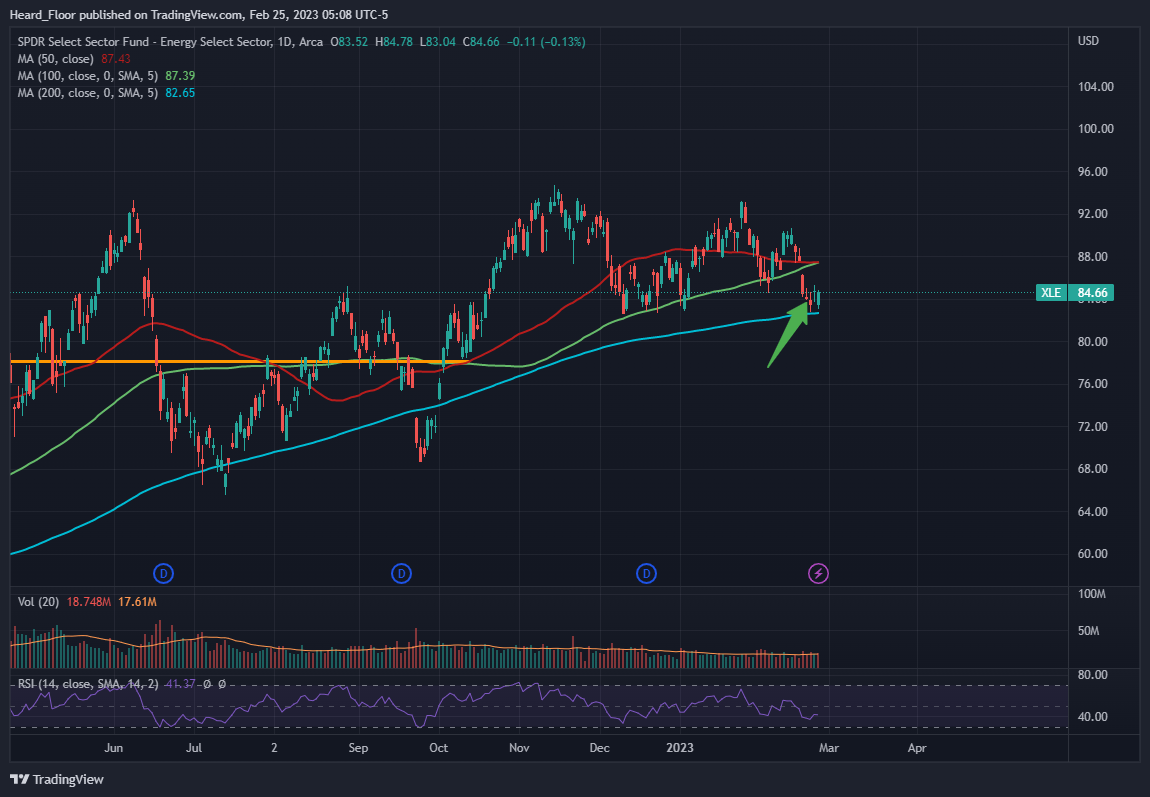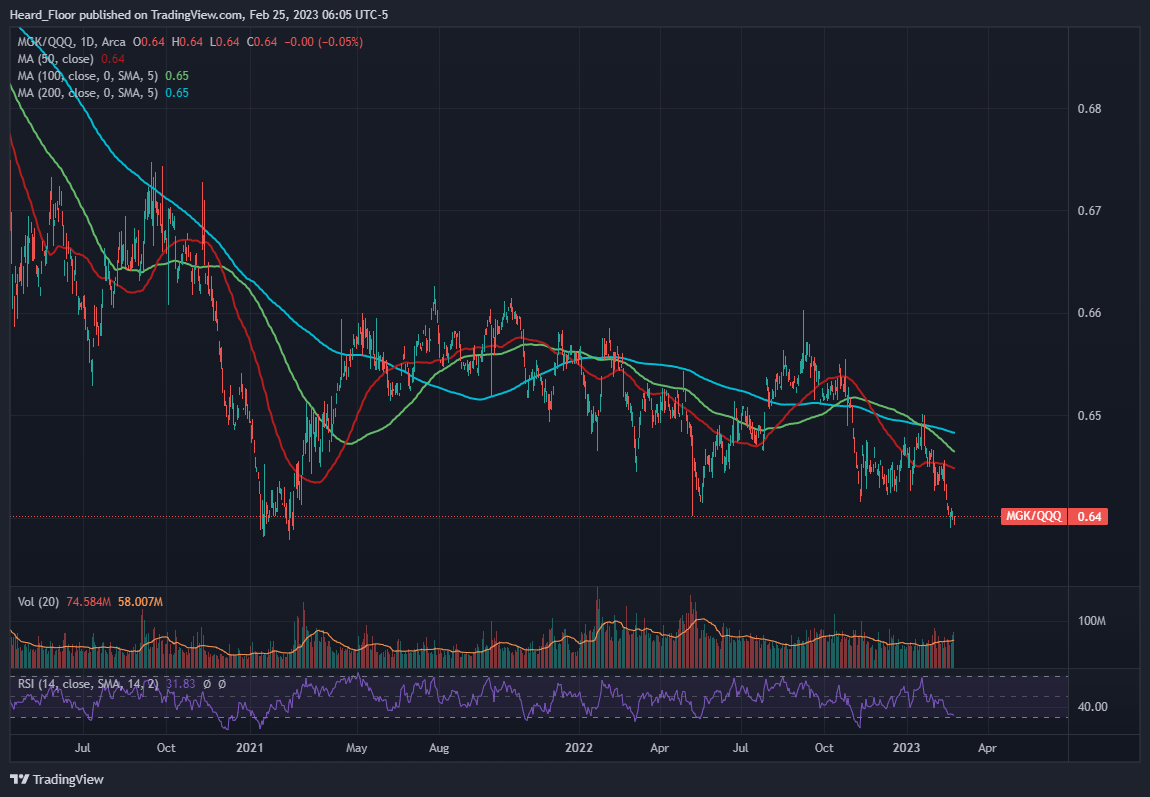An Ode to pair trading with ETFs
Why and how we do ETF pair trading in the world of equities
Note: This piece was written during the last weekend of February. Please excuse us if some of the charts appear outdated. This should not in any way decrease the value in the ideas discussed below. Enjoy.
Those who follow us know we love to express our ideas in terms of pairs. We have done a couple of write-ups on how we do that in the Fixed income world. Readers have expressed quite an interest in our approach and I thought it might be appropriate to shed some light on how we do this in the Equity realm too. It should not come as a surprise that we have developed an affection towards a Longs / Short approach of carefully selected ETFs given the huge list of pros that have. To name a few, trading an ETF pair gives you the following advantages:
Not aiming to guess what the general market will do. It is no news for those betting on general movements of indices that the market has been very choppy recently. And I am not speaking for the last couple of weeks. Since mid-November the SPX return is basically flat with a +5%/-5% range. While it did provide some opportunities, if you are trading professionally you are constantly fighting your urge to do something, which often gets you in a lot of trouble. Betting on ETF pairs enriches the trading universe a lot and one does have to be glued to one particular asset to wait for setups (and think there are any when there are not)
Lack of idiosyncratic risks. As traders and not investors, we love leverage. But levering up on a single stock to express a view could lead to a lot of pain. Individual stocks go up and down heavily on earnings, guidance, news, rumors, organized pumps/dumps and even fake tweets, which makes it hard to control the downside when kept overnight. Not only we do use tons of leverage but we also have high concentrated portfolios. As we do not make the trades, we let them come to us, we often have up to 10 trades in the books. Suffering huge gaps would skew the performance in an ugly manner. Not only would the equity curve look bad, but the destruction of emotional/mental capital would have an even bigger impact due to opportunity costs going forward. Here comes the innate diversification of the ETF. Unless chosen carelessly, they provide good exposure to a particular set of companies without being heavily concentrated in any on them. Unwanted gaps might happen in the individual names but their effect will be watered down to allow proper risk management
Ability to express an idea/theme. You might think rates which by any means should be bad for real estate. But you also know that there is a supply/demand imbalance in housing and the recent drop in commodity prices allows homebuilders to keep margins high. Well, in this case, you can easily hop long XHB and short VNQ to express that particular view. Hedge fund manager and one the GOATs in the business - Stanley Druckenmiller - is famous for comparing relative performance (i.e. ratios) of different sectors such as consumer discretionary (XLY) versus consumer staples (XLP) to gauge the heartbeat of the economy.
Clear trade management - once you have set your eyes on a pair you want to trade setting up a ratio chart is as easy as it gets. One often sees a trend or a good range with levels which makes it perfect for objectively placing a profit target and a stop
Scalability - if not a very niche ETF (or an European one), you can probably place a bet as big as you want
Liquidity and borrow - spreads are extremely narrow, borrow fees are cheap as hell and there are always shares to short
Now that I have laid out some (but I guess not all) of the reasons that attract me to pair trading ETFs, let’s go to some real world examples.
Before moving onto the interesting part I want to give fx:macro’s newsletter a shout out. He is the very best in summarizing central bank’s activities and the most important macro events in the coming week. There is so much going on in the central banking world at any given moment that getting up to date without his publication will be impossible. Highly recommended.
A missed opportunity - If you have followed the last Equity weekly review will probably know that I am speaking of a ratio trade in the energy sector that aligned well with what I tend to like - well-formed levels of sector pairs. By now, you should be well aware of your views on the attractiveness of the energy sector given how bombarded with information we have been since the beginning of 2022. Hate it or love it, facts are that the majors (XLE) were the place to be last year and even significantly outperformed on a total return basis its closely related peers from adjacent subsectors such as energy infrastructure (AMLP) or the exploration space (XOP). Its number 1 ranking performance was somewhat challenged only by the stocks within oil services (XES).
Fast forward a couple of months and we seem to have a new contender for the title of best performing energy ETF - XES.
Seeing this change in subsector leadership, and knowing it had actually been going on before year end, I quickly turned on the XLE/XES chart to see how it looks like. Not surprisingly, the ratio had sold down a lot but was currently sitting at a very decent level around 1.00.
It looked tempting for a quick scalp on the long side, especially taking into account where the individual ETFs were at that time - XLE right at the support of $83 with sma200d slightly below on the one hand, and XES somewhat extended to the upside with a pocket below to first support and sma50d.
So far so good I thought and started digging further to check out the constituents of XES. It turned out the biggest weights there are offshore drilling companies such as RIG, VAL, TDW, which have increasingly been gaining traction among value lovers. Knowing that some really bright guys (those at KEDM.com) are all over them made me think twice whether I want to short it. It is never nice to have fundamentals against you even though the duration of the planned trade only being a couple of days over which fundamentals do not play such a role.
Fast forward 2 days into last week, the ratio had returned 4.6%. It has given most of that since then, but to be honest, this would have been enough for me to take profit and sit and relax with what would have been left.
A trade we banked on - Another opportunity that did not get away was a long USMV and short SPY. I have previously discussed its merits here:
Long story short, defensive names had sucked wind for some time since YTD got fresh hopes for the bulls. The risk on behavior made the low volatility factor the worst performing by that time (approximately 2w ago). Feeling that SPY had gone too much too fast, I started looking for some mean reversion and flows back into less ’risky’ equities.
Long USMV had exactly those characteristics and just so happened that was sitting on a great level against SPY. As luck would have it, I go a near perfect entry on Feb of 9 and have since taken of 2/3 of the position.
The beauty with ETFs is that there is such a wide variety to choose from. If you think you are limited to sectors and subsectors, you are wrong. There are the different factor ETFs (volatility, momentum, high dividend, size, etc) and thematic ETFs too (such as ARKK). Once something has caught your eye and you have come up with a decent idea you just have to find a good spot that allows you properly to manage the trade. And levels on charts make it as easy as it gets.
What is on the watchlist - In last week’s equity review I also mentioned the recent outperformance of IWM vs SPY. Unfortunately, it did pause the last couple of days, which decreased the built up momentum and the level of overextension. Nevertheless, it is on the radar, given the good level it is approaching just when all mega caps appear to be heavily beaten down.
I expect them to find a short term bottom rather sooner than later. I think GOOG, AMZN have taken quite the beating all the while AAPL is at sma200d and MSFT at 250$ (good support).
Another way to express that idea is through the megacap ETF MGK, which happens to be trading at a great spot against the QQQ.
There is a big overlap within the holdings of the two ETFs and I certainly do like the less weight MGK has in clearly overbought and overvalued tickers NVDA and TSLA.
However, what bothers me is that I do not fully understand the constant drag of the MGK/QQQ ratio that has been going since ever (no, not due to dividends nor expense ratio).
I certainly do not want to swim against the tide even. Similar to XLE/XES, I like all the factors well aligned with my rationale despite this leading to a couple of missed trades here and there.
Conclusion: I wrote thinking it is a nice follow up to other topics on pair trading that we have done. There are many ways to make money in markets but we have found that pair trading fits us well. When done with equity ETFs, the advantages are many. The ETF universe is diverse, liquid, cheap to trade and allows neat trade and risk management that keep you away from huge idiosyncratic risks.
Other write-ups on pair trades
The Ode to Pair trading from you favourite chat:
Oh, Pair Trading, how divine,
Your beauty lies in two that combine,
A long and short position, so refined,
Perfect harmony in the market we find.
Your essence lies in correlation,
In two assets moving in relation,
When one rises, the other falls in proportion,
Your balance is the trader's satisfaction.
A game of patience and analysis,
A strategy for those with a knack for it,
With careful selection and accurate prognosis,
Profits abound, and losses are mitigated.
Oh, Pair Trading, you're a work of art,
A symphony of two, never apart,
In a market that's fickle, you play the part,
A champion of risk management, right from the start.













